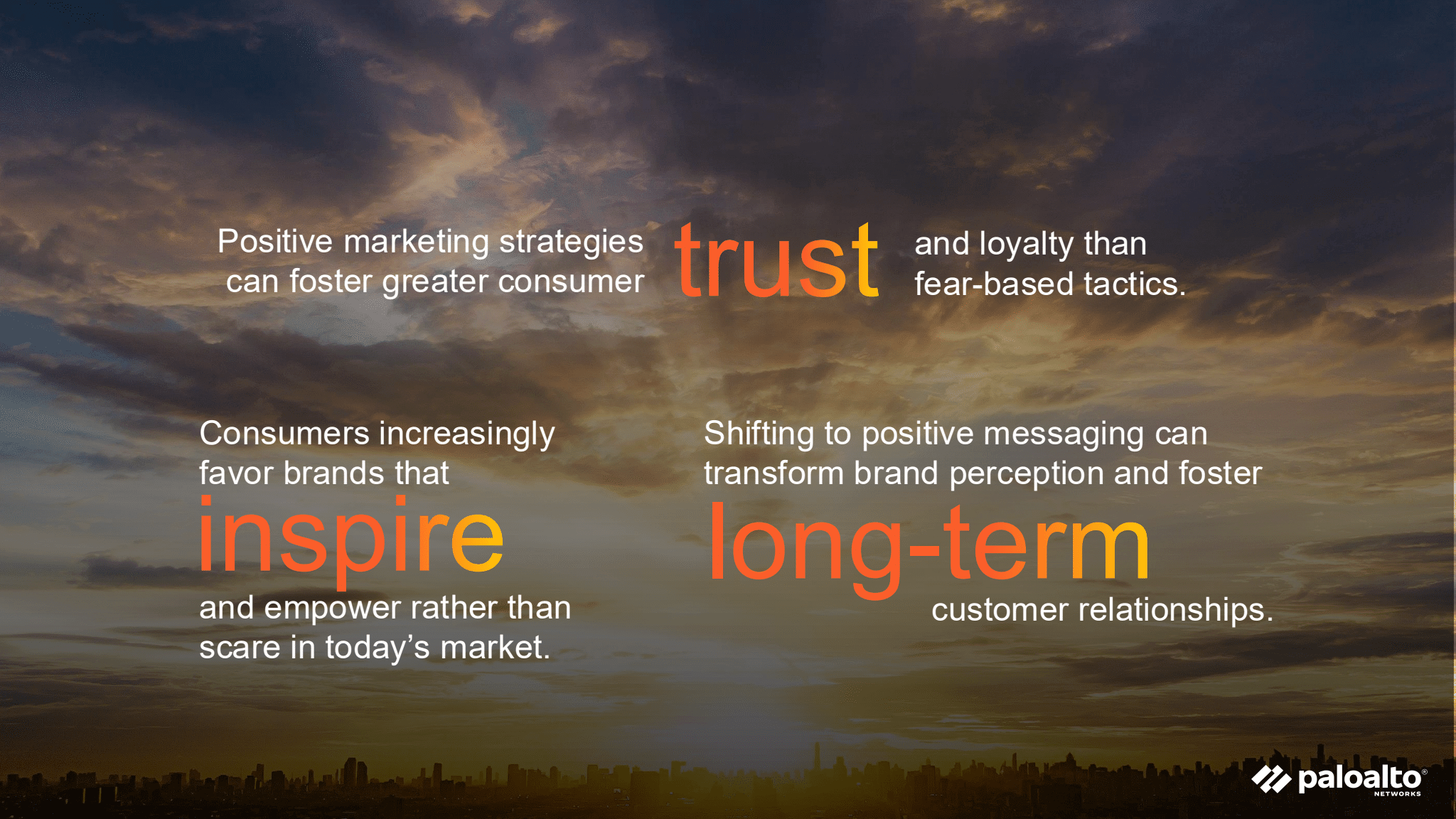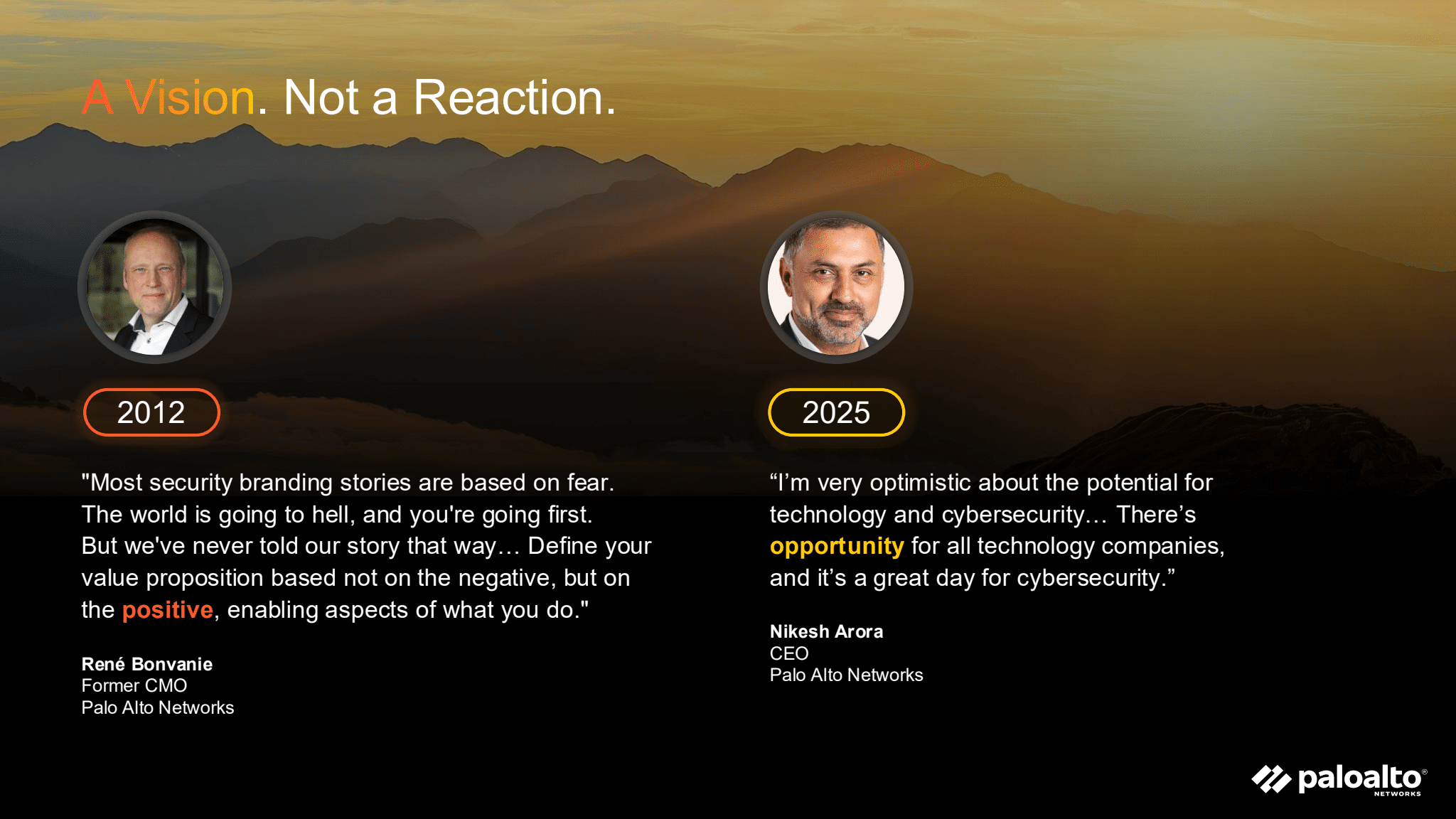
Have you noticed how much of the marketing we see today, particularly in industries like finance, insurance, and security, is rooted in fear? The default mode is to tell the customer that the world is going to hell, and they’re next.
But what if I told you that moving away from that fear and embracing optimism can lead to greater success, better brand trust, and more transformative results?
Spoiler alert: it can. In this article, I’m going to show you how. Here’s a taste of what we’ll cover:
- Real-world examples of marketing messages that lean into optimism versus those that lean into fear.
- A case study showing how we’ve used optimism-based marketing at Palo Alto Networks and the results we’ve achieved.
- How to create messaging that empowers and inspires your customer.
When marketing relies on fear
In many industries, the core marketing approach is designed to trigger anxiety so that the customer will take immediate action. They want you to feel a sense of emergency. They want you to think, “If I don’t buy this now, something terrible will happen.”
We see this everywhere. You hear messages like, “Are you covered when disaster strikes?”, “Have you really planned for your retirement?”, and “Are you ignoring the warning signs?”.

My own industry, cybersecurity, is one of the worst offenders. The messages are often designed to generate panic: “One click could cost you everything.” Or, “Hackers don’t sleep, and neither should your defenses.” It’s a constant state of anxiety we project onto the customer.
AI: The latest fear factor
Now, with the rise of AI, this fear is amplifying. We’re being bombarded with risks: deepfake videos, hackers misusing AI to create sophisticated ransomware, and the overarching societal fear of jobs being replaced by technology.
As a result, the atmosphere surrounding innovation is increasingly dominated by fear and uncertainty.

But what if we could counter this narrative? What if we could look at the greatest adversity and choose to meet it with incredible optimism?
For expert advice like this straight to your inbox every Friday, sign up for Pro+ membership.
You’ll also get access to 30+ certifications, a complimentary Summit ticket, and 130+ tried-and-true product marketing templates.
So, what are you waiting for?
The case for optimism
The story of Apollo 13 offers a powerful blueprint for a more positive approach to marketing.
In case you don’t know the story or haven’t seen the 1995 movie, here’s how it goes. Three astronauts were stranded in space after an explosion. They had to move into a tiny lunar module meant for two. When carbon dioxide filters became a critical problem, the team at Houston had to figure out how to fit a round filter into a square hole using only the materials available, like socks, plastic trash bags, and duct tape.
They succeeded not just because of ingenuity, but because they embraced the spirit of optimism in the face of incredible, life-threatening adversity.
Now, you might be wondering what this has to do with marketing. Well, consumers also seek this forward-thinking approach. Research shows they trust brands that inspire and empower rather than scare.

Building a brand rooted in optimism
For optimism-based marketing to work, it must be more than just a tagline – it has to be rooted deep within your company’s foundation. If your culture, product, and mission aren’t aligned, any positive messaging will feel like lipstick on a pig.
Alignment of culture, product, and mission
At Palo Alto Networks, we’ve always focused on this alignment. Our former CMO framed the problem perfectly: most security branding is based on fear, but we define our value proposition not by the negative, but by the positive, enabling aspects of what we do.
Our current CEO shares that same vision, expressing profound optimism about the potential of technology and cybersecurity. This belief system is what guides every decision, from our sales training to our product development.

This philosophy has even been embedded in our product itself from the very start. When Palo Alto Networks was founded in 2005, the team deliberately chose a different approach from the rest of the cybersecurity industry.


